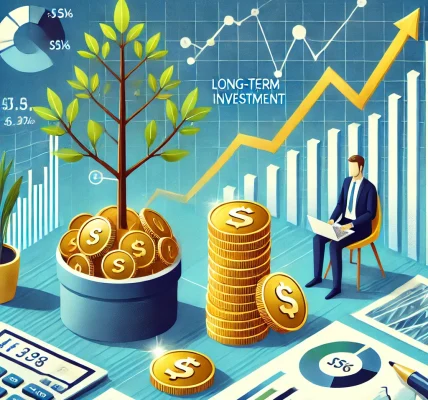Introduction
Investing in the stock market requires a strategic approach, especially when considering the ever-changing economic landscape. One powerful strategy that investors use to optimize their portfolios is sector rotation. Sector rotation is the practice of shifting investments among different sectors of the economy depending on the phase of the economic cycle. Understanding this concept can help investors maximize returns while managing risk effectively.
In this article, we will explore the fundamentals of sector rotation, how economic cycles influence different sectors, and the best ways to implement this strategy.
Understanding Sector Rotation
Sector rotation is based on the premise that different industries perform differently during various stages of the economic cycle. By analyzing economic indicators and market trends, investors can allocate capital to sectors that are expected to outperform in the current environment.
The Four Phases of the Economic Cycle
The economy moves in cycles, typically categorized into four stages:
- Expansion – Economic growth accelerates, consumer demand increases, corporate earnings rise, and stock prices climb.
- Peak – Growth reaches its highest point, inflation may rise, and interest rates might be increased by central banks.
- Contraction (Recession) – Economic activity slows down, corporate earnings decline, unemployment rises, and stock markets drop.
- Trough (Recovery) – The economy begins to recover, government policies stimulate growth, and markets start to stabilize.
Each of these phases affects stock market sectors differently, leading to opportunities for investors to adjust their portfolios accordingly.
Best Sectors for Each Economic Phase
1. Expansion Phase: Growth and Rising Inflation
During expansion, the economy grows, consumer spending rises, and businesses flourish. The best sectors to invest in during this phase include:
- Technology (Tech Stocks) – Companies innovate, driving economic progress and stock price appreciation.
- Consumer Discretionary – Retailers, entertainment, and luxury goods benefit from increased consumer spending.
- Financials – Banks and financial institutions thrive as interest rates rise and credit demand increases.
2. Peak Phase: Market Saturation and Inflationary Pressures
At the peak of the economic cycle, inflation concerns lead to increased interest rates, and growth slows down. The best sectors for this phase are:
- Energy – Oil and gas companies often benefit from rising demand and inflation-driven price hikes.
- Materials – Mining, chemicals, and commodity-based industries perform well due to high resource demand.
- Industrials – Infrastructure and construction companies continue to generate revenue from ongoing projects.
3. Recession Phase: Economic Slowdown and Market Decline
During a recession, consumer confidence drops, and businesses experience declining revenues. Defensive sectors become attractive, such as:
- Healthcare – Pharmaceuticals and medical services remain essential, ensuring steady demand.
- Utilities – Electricity, water, and gas providers generate consistent revenue regardless of economic conditions.
- Consumer Staples – Essential goods like food, beverages, and household products see stable demand.
4. Trough (Recovery) Phase: Economic Rebound
As the economy recovers, growth-oriented sectors start to regain strength. The best sectors for this phase include:
- Real Estate – As interest rates decline, property investments and construction activities pick up.
- Technology – Early-stage growth stocks in tech begin to surge with increased optimism.
- Financials – Banks benefit from increased lending and economic expansion.
How to Implement Sector Rotation
1. Monitor Economic Indicators
Successful sector rotation requires a deep understanding of economic indicators such as GDP growth, unemployment rates, inflation data, and interest rate changes.
2. Use Exchange-Traded Funds (ETFs)
Investing in sector-based ETFs allows investors to gain exposure to specific industries without picking individual stocks.
3. Follow Market Trends and Sentiment
Keeping an eye on market sentiment and analyst reports can help identify turning points in the economic cycle.
4. Diversify and Rebalance Your Portfolio
Regularly adjusting your portfolio based on economic conditions ensures that investments remain aligned with market trends.
Risks of Sector Rotation Strategy
While sector rotation can be highly profitable, it also comes with risks:
- Market Timing Risks – Predicting economic cycle transitions accurately is challenging.
- Volatility – Some sectors experience extreme price fluctuations, leading to potential losses.
- Economic Uncertainty – Unexpected events like geopolitical issues or financial crises can disrupt normal cycle patterns.
Conclusion
Sector rotation is a valuable investment strategy that enables investors to capitalize on economic cycles. By understanding which sectors perform best during each phase, investors can optimize their portfolios and reduce risk exposure. However, successful sector rotation requires thorough research, a disciplined approach, and continuous monitoring of economic trends.
By leveraging sector rotation effectively, investors can make informed decisions and enhance their long-term financial gains. Always consider diversification and risk management to build a sustainable investment strategy.




